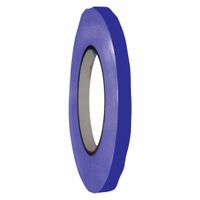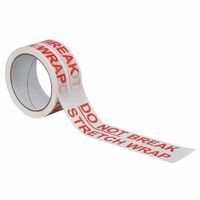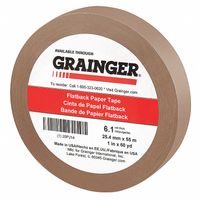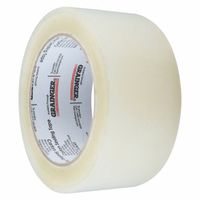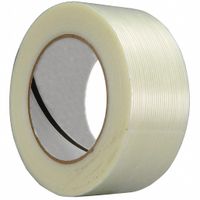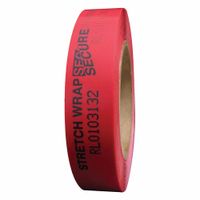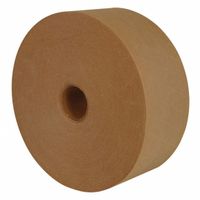Call +(254) 703 030 000 / 751 483 999 / 721 704 777
- Home
- Packaging Shipping
- Packaging Tapes Dispensers Machines
.....Read More
Frequently Asked Questions
What is the best packaging tape for shipping?
The best packaging tape for shipping depends on several factors, including the weight of the package, the shipping conditions, and the type of material being sealed. However, a few options consistently stand out for their reliability and performance.
1. **Acrylic Adhesive Tape**: This is ideal for long-term storage and shipping in varying temperatures. It resists yellowing and maintains its adhesive properties over time, making it suitable for packages that might be stored for extended periods.
2. **Hot Melt Adhesive Tape**: Known for its strong bond, this tape is excellent for heavy packages. It provides a quick stick and is resistant to splitting and tearing, making it a preferred choice for high-volume shipping environments.
3. **Water-Activated Tape (Gummed Tape)**: This tape offers a tamper-evident seal, which is crucial for high-value shipments. It bonds with the cardboard surface, creating a strong seal that is difficult to break without leaving evidence of tampering.
4. **Reinforced Filament Tape**: For extremely heavy or bulky items, reinforced filament tape is ideal. It contains fiberglass filaments that provide additional strength and durability, ensuring the package remains secure during transit.
5. **Biodegradable Tape**: For eco-conscious businesses, biodegradable tape offers an environmentally friendly option without compromising on performance. It is typically made from renewable resources and breaks down more easily than traditional tapes.
Ultimately, the best packaging tape for shipping will depend on specific needs, such as the weight of the package, environmental conditions, and security requirements. It's important to consider these factors to ensure the tape chosen provides the necessary strength and reliability for safe delivery.
How do you load a tape dispenser?
1. **Gather Materials**: Ensure you have the tape dispenser and a compatible roll of tape.
2. **Prepare the Dispenser**: Place the dispenser on a stable surface. If it has a cover or protective casing, remove it to access the spindle.
3. **Remove Old Tape (if necessary)**: If there is an old roll, remove it by lifting it off the spindle.
4. **Identify Tape Roll Orientation**: Check the tape roll to determine the direction the tape should unwind. Typically, the sticky side should face down when pulled.
5. **Insert the Tape Roll**: Slide the new tape roll onto the spindle. Ensure the roll is positioned so that the tape unwinds in the correct direction, usually over the top of the roll.
6. **Thread the Tape**: Pull the tape end and thread it through the guide or slot, if the dispenser has one. Ensure the tape is aligned properly to avoid tangling.
7. **Secure the Tape**: Pull the tape end over the cutting blade or serrated edge of the dispenser. Leave a small amount of tape hanging over the edge for easy access.
8. **Test the Dispenser**: Gently pull the tape to ensure it unwinds smoothly and cuts cleanly. Adjust the roll or tape alignment if necessary.
9. **Replace the Cover**: If the dispenser has a cover, replace it to protect the tape and maintain the dispenser’s functionality.
10. **Store Properly**: Place the loaded dispenser in a convenient location for easy access during use.
What are the different types of packaging tape?
There are several types of packaging tape, each designed for specific applications and materials:
1. **Acrylic Tape**: Known for its clarity and UV resistance, acrylic tape is ideal for long-term storage and shipping. It performs well in a wide range of temperatures and is resistant to aging and yellowing.
2. **Hot Melt Tape**: This tape offers strong adhesion and is suitable for sealing packages that require a secure bond. It is often used in high-speed packaging lines due to its quick tack and strong hold.
3. **Water-Activated Tape (Gummed Tape)**: Made from paper and a water-based adhesive, this tape provides a strong, tamper-evident seal. It is eco-friendly and often used for heavy-duty packaging.
4. **Masking Tape**: While not typically used for packaging, masking tape can be used for light-duty sealing and bundling. It is easy to tear and remove without leaving residue.
5. **Duct Tape**: Known for its strength and versatility, duct tape can be used for heavy-duty packaging and repairs. It is water-resistant and adheres to a variety of surfaces.
6. **Filament Tape**: Reinforced with fiberglass filaments, this tape is extremely strong and used for bundling heavy items and reinforcing packages.
7. **Double-Sided Tape**: Used for mounting and securing items within packages, this tape has adhesive on both sides.
8. **Strapping Tape**: Designed for securing pallets and heavy loads, strapping tape is strong and often reinforced with fibers.
9. **Electrical Tape**: While primarily used for insulating electrical wires, it can be used for sealing and bundling in specific applications.
10. **Custom Printed Tape**: Used for branding and security, this tape can be printed with logos or messages to enhance package presentation and deter tampering.
How do bag sealing dispensers work?
Bag sealing dispensers are devices designed to efficiently seal bags, ensuring their contents are secure and protected. These dispensers typically work using a simple yet effective mechanism that involves a few key components: a cutting blade, a sealing tape, and a guide for the bag.
To operate a bag sealing dispenser, the user first places the open end of the bag into the dispenser's guide. This guide aligns the bag for a straight and even seal. As the bag is pulled through the dispenser, it encounters the sealing tape, which is usually pre-loaded onto a roll within the dispenser. The tape is coated with an adhesive on one side, which sticks to the bag as it passes through.
The user continues to pull the bag until the desired length of tape has been applied. At this point, the bag is sealed, and the excess tape is cut using the dispenser's cutting blade. This blade is typically positioned at the end of the dispenser, allowing for a clean and precise cut. The cutting action is often triggered automatically as the bag is pulled through, or it may require a manual action, such as pressing a lever.
Some advanced bag sealing dispensers may include additional features, such as adjustable tension settings for different bag thicknesses, or the ability to use different types of sealing materials, like heat-sealable tape. These dispensers are commonly used in various industries, including food packaging, retail, and manufacturing, due to their efficiency and ease of use.
What is the difference between strapping tape and regular tape?
Strapping tape and regular tape differ primarily in their composition, strength, and intended use.
Strapping tape, also known as filament tape, is reinforced with fiberglass filaments, which provide exceptional tensile strength. This makes it ideal for securing heavy packages, bundling items, and reinforcing shipments. The adhesive used in strapping tape is typically stronger and more durable, designed to withstand significant stress and maintain adhesion under challenging conditions. The tape is often used in industrial and shipping applications where reliability and strength are crucial.
Regular tape, such as cellophane or masking tape, is generally made from a thin plastic or paper backing with a standard adhesive. It is designed for everyday tasks like sealing envelopes, wrapping gifts, or light-duty repairs. Regular tape lacks the reinforcement found in strapping tape, making it unsuitable for heavy-duty applications. Its adhesive is usually less robust, intended for temporary or light-duty adhesion.
In summary, the key differences lie in the reinforcement, adhesive strength, and application suitability, with strapping tape being the choice for heavy-duty tasks and regular tape for everyday, lighter tasks.
How do you maintain a tape dispenser?
To maintain a tape dispenser, follow these steps:
1. **Regular Cleaning**: Wipe the dispenser with a damp cloth to remove dust and adhesive residue. For stubborn residue, use a mild solvent like rubbing alcohol.
2. **Blade Care**: Ensure the cutting blade is sharp and free of adhesive buildup. Clean it with a small brush or cloth soaked in alcohol. If the blade is dull, replace it to ensure clean cuts.
3. **Check the Rollers**: Inspect the rollers for smooth operation. Clean them with a damp cloth to remove any adhesive or dust. Ensure they rotate freely to prevent tape jamming.
4. **Lubrication**: If the dispenser has moving parts, apply a small amount of lubricant to keep them functioning smoothly. Avoid over-lubricating, as excess oil can attract dust.
5. **Inspect for Damage**: Regularly check for cracks or broken parts. Replace any damaged components to maintain functionality and safety.
6. **Proper Storage**: Store the dispenser in a dry, cool place to prevent rust and adhesive degradation. Keep it away from direct sunlight and heat sources.
7. **Tape Replacement**: When replacing the tape roll, ensure it is properly aligned and seated to prevent jamming. Use the correct size and type of tape for your dispenser.
8. **User Training**: Ensure all users know how to operate the dispenser correctly to prevent misuse and damage.
By following these maintenance steps, you can extend the life of your tape dispenser and ensure it operates efficiently.
What is the strongest type of packaging tape?
The strongest type of packaging tape is typically considered to be filament tape, also known as strapping tape. This tape is reinforced with fiberglass filaments, which provide exceptional tensile strength and durability. Filament tape is designed to handle heavy-duty applications, making it ideal for securing large, heavy packages and bundling items that require extra support.
The fiberglass filaments embedded within the tape give it a high resistance to tearing and splitting, even under significant stress. This makes filament tape particularly useful in industrial settings where packages are subjected to rough handling and transportation. The adhesive used in filament tape is also formulated to provide a strong bond to a variety of surfaces, ensuring that the tape remains securely in place.
In addition to its strength, filament tape is resistant to moisture and temperature variations, which helps maintain its integrity in different environmental conditions. This makes it suitable for both indoor and outdoor use, as well as for long-term storage.
While filament tape is the strongest, other types of packaging tapes like duct tape and gummed paper tape also offer strong adhesion and durability for specific applications. Duct tape is known for its versatility and water resistance, while gummed paper tape, which is activated by water, provides a strong, tamper-evident seal that is environmentally friendly.
Overall, for the strongest and most reliable packaging solution, especially for heavy or valuable shipments, filament tape is the preferred choice due to its superior strength and performance characteristics.
How do you use a strapping tape dispenser?
To use a strapping tape dispenser effectively, follow these steps:
1. **Load the Tape**: Begin by loading the strapping tape onto the dispenser. Ensure the roll is placed so that the adhesive side faces down and the tape unwinds smoothly from the roll. The roll should be positioned on the spindle, with the tape feeding from the bottom.
2. **Thread the Tape**: Pull the tape through the guide and over the cutting blade. Some dispensers have a tension knob or brake; adjust this to control the tape's tension as it unwinds.
3. **Position the Dispenser**: Hold the dispenser handle firmly. Position the tape's end on the surface you wish to strap, ensuring it adheres properly. The dispenser should be at a slight angle to the surface for optimal application.
4. **Apply the Tape**: Press the tape onto the surface and pull the dispenser along the area to be taped. Maintain consistent pressure to ensure the tape adheres smoothly without bubbles or wrinkles.
5. **Cut the Tape**: Once the desired length is applied, tilt the dispenser forward to engage the cutting blade. This motion will cut the tape cleanly. Ensure the blade is sharp for a precise cut.
6. **Secure the End**: Press down on the cut end of the tape to ensure it sticks firmly to the surface. If necessary, smooth out any air bubbles or wrinkles by hand.
7. **Adjust Tension**: If the tape is not dispensing smoothly, adjust the tension knob or brake to achieve the desired resistance.
8. **Store Properly**: After use, store the dispenser in a clean, dry place to prevent dust accumulation on the tape and blade.
By following these steps, you can efficiently use a strapping tape dispenser for secure and effective packaging.
Can packaging tape be recycled?
Packaging tape is generally not recyclable due to its material composition. Most packaging tapes are made from plastic materials such as polypropylene or PVC, which are not accepted in standard recycling programs. These materials can contaminate the recycling process if mixed with paper or cardboard, which are commonly recycled.
However, there are some exceptions. Certain types of packaging tape, like those made from paper or biodegradable materials, can be recycled or composted, but this depends on local recycling facilities and their capabilities. It's important to check with your local recycling program to see if they accept these materials.
To improve recyclability, it's recommended to remove as much tape as possible from boxes and other packaging before placing them in the recycling bin. This helps ensure that the cardboard or paper can be processed without contamination.
For those looking to reduce environmental impact, consider using eco-friendly alternatives such as water-activated tape, which is often made from paper and can be recycled along with cardboard, or biodegradable tapes that break down more easily in the environment.
What are the benefits of using a bag sealing tape dispenser?
A bag sealing tape dispenser offers several benefits that enhance efficiency and convenience in various settings. Firstly, it significantly speeds up the packaging process. By providing a quick and easy way to seal bags, it reduces the time and effort required compared to manual sealing methods. This is particularly advantageous in high-volume environments such as warehouses, retail stores, and food packaging facilities.
Secondly, a tape dispenser ensures consistent and secure seals. The device applies uniform pressure and tension, resulting in a reliable seal that helps maintain the integrity of the contents. This is crucial for preserving freshness in food items and preventing contamination or spillage in other products.
Thirdly, using a bag sealing tape dispenser can lead to cost savings. It minimizes tape wastage by cutting the tape precisely to the required length, reducing the amount of tape used per seal. This efficiency in tape usage can lead to significant savings over time, especially in large-scale operations.
Additionally, the ergonomic design of many dispensers reduces strain on the user. By minimizing repetitive motion and the physical effort needed to seal bags, it helps prevent workplace injuries and enhances user comfort.
Moreover, a tape dispenser is versatile and can accommodate various tape sizes and types, making it suitable for different bag materials and thicknesses. This adaptability ensures that businesses can use the same device for multiple applications, further enhancing its value.
Finally, the durability and low maintenance requirements of most dispensers make them a cost-effective investment. Built to withstand frequent use, they require minimal upkeep, ensuring long-term reliability and performance. Overall, a bag sealing tape dispenser is an essential tool for improving productivity, ensuring quality, and reducing costs in packaging operations.
